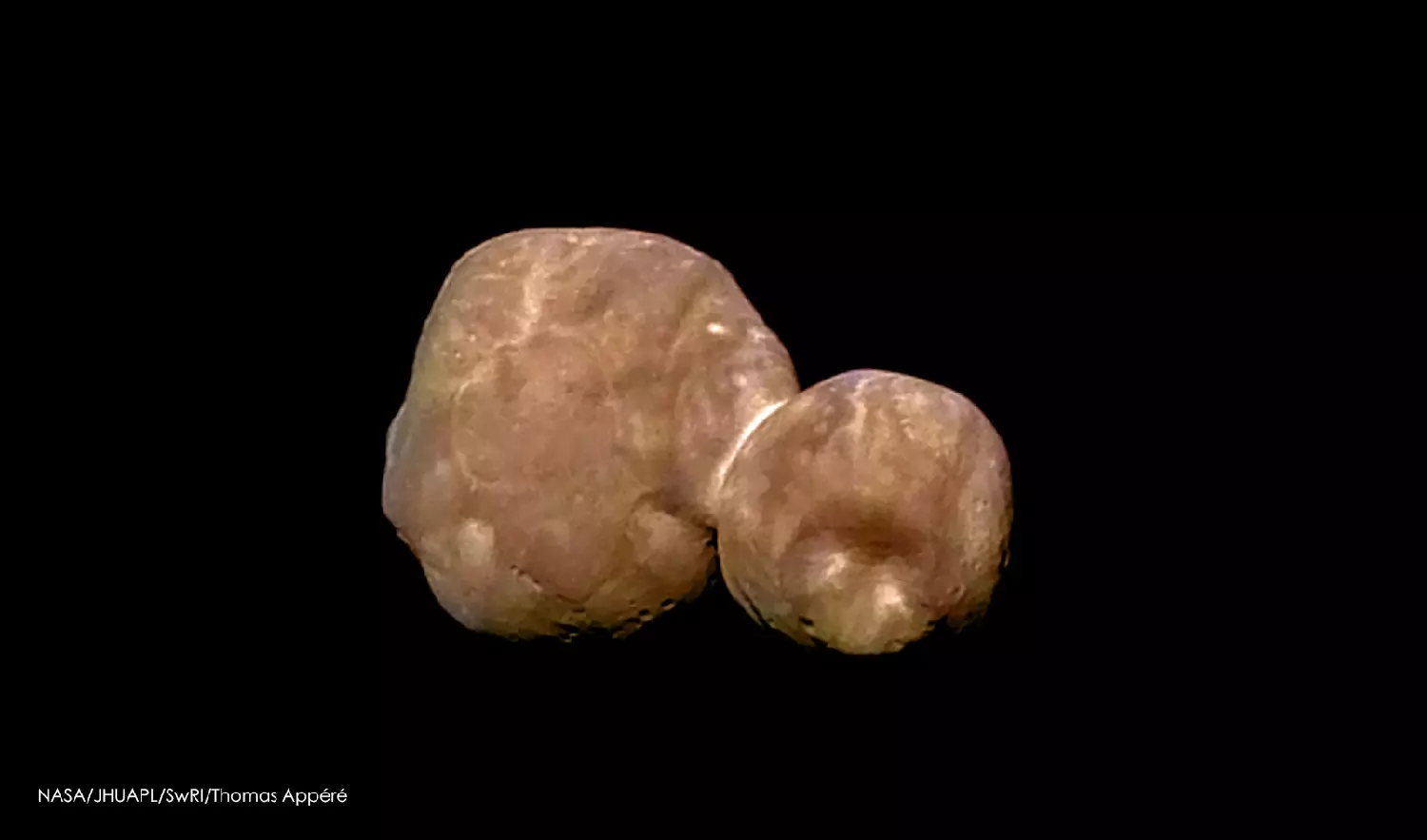[Originally published on January 4, 2019 as Ultima Thule]
A few days ago, the New Horizon’s spacecraft flew past the small trans-Neptunian object, 2014 MU69. At a distance of over 4 billion miles from earth, MU69 is the most distant object ever visited by a manmade instrument. Congratulations to the New Horizon’s team on a remarkable achievement! As the surprising images of this remarkable object continue to pour in, I am continually amazed at God’s creativity.
The New Horizons spacecraft was launched in 2006 on a mission to explore Pluto. It took nine years to reach Pluto at a distance of 3 billion miles from Earth. In the summer of 2015 we were treated to the first high-resolution images of Pluto as New Horizons transmitted its data back to Earth. This was a fly-by mission, so the spacecraft continued to coast on past Pluto into the depths of the solar system. But the spacecraft’s mission was not over.
There are objects in our solar system that orbit even farther out than Pluto. But little is known about these trans-Neptunian objects (TNOs) because they are small and billions of miles away. They appear as tiny dots of light in even the best Earth-based telescopes. Since the New Horizons craft has thrusters that allow it to adjust its trajectory (slightly), would it be possible to intercept one of these objects?
The New Horizons team selected 2014 MU69. Amazingly, this little object had not even been discovered when the New Horizons craft was launched. This TNO was discovered in 2014, when New Horizons was only a year away from Pluto. The New Horizons team has given 2014 MU69 the informal name “Ultima Thule” (Thule is pronounced “Thool ee” or “Tool ee”) which in Latin means “the farthest point”.
As of New Year’s Day, the spacecraft has reached its destination and taken high-resolution images of Ultima Thule. New Horizons has only begun transmitting the images stored on its hard drive back to Earth.
Surprising Features
The first of these high-resolution images revealed a wonderful surprise: Ultima Thule is a contact binary! That means it is two quasi-spherical objects that touch, resembling a snow-man (or BB-8). Nothing like this has been (definitively) discovered in our solar system. The New Horizons team has fittingly (and informally) named the larger lobe “Ultima” and the smaller lobe “Thule.” Together, the two lobes extend just over 21 miles.
The two lobes rotate/revolve around their common center of mass (on Ultima) approximately every 15 hours. This is far slower than what we would expect if these objects once orbited each other with some space in between, and gradually came together. Secular astronomers have already begun speculating on how such a configuration could come about by natural means.
Ultima Thule is noticeably reddish in color, similar to Pluto. This might suggest compositional similarity, although the composition data has not yet been received from the spacecraft. The neck connecting the two lobes is a bit lighter in color, perhaps due to debris that has fallen into this cusp due to the unusual gravitational potentials. No craters are yet clearly visible, but the sun-angle of the current images would make them difficult to detect if they are there. Even higher resolution images will be transmitted in time. We expect these will continue to yield some wonderful surprises, consistent with the creativity of the Lord.






